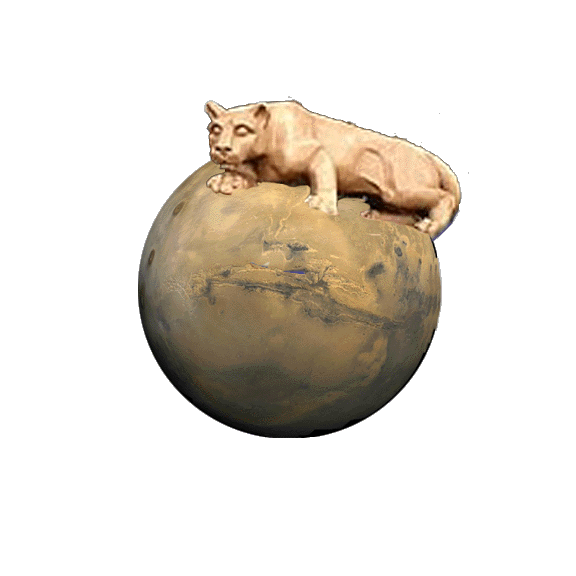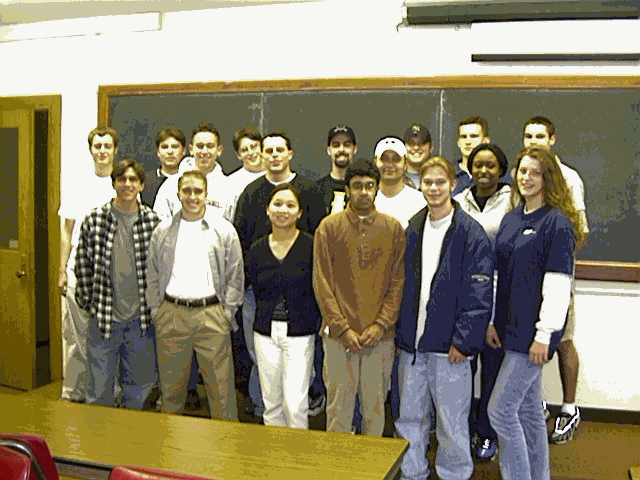
HEDS-UP May 8, 2000
PENN STATE
College of Engineering

ON TO MARS!
Penn State Undergraduates Win NASA Competition
Class of Spring 2000, EE497D and ME497C
On May 5, 2000 at the NASA Planetary Institute Forum 2000 - Human Exploration and Development of Space held in Houston, Texas our students scored third place together with California Technological University. The second place was awarded to the University of Maryland, and the winner for this year is the Colorado School of Mines (undergraduate team) and the Georgia Institute of Technology (graduate team). The competition was tight and included twelve other prominent universities: California Institute of Technology, Colorado School of Mines, Cornell University, Embry - Riddle Aeronautical University, Georgia Institute of Technology, Rowan University, University of California, Berkeley, University of Colorado, Boulder, University of Maryland, University of Texas, Austin, University of Washington, and Wichita State University.

Penn State University HEDS-UP team has designed a novel Mars robotic mission approach to investigate the history of Mars by going to spectacular cliffs in Valles Marineris. The details and students final report can be found at the website: www.engr.psu.edu/ee/pub/ee497d/.
Figure. Class EE497D and ME497C - Nikki Thornton, David Borowski, Joseph Yagloski, Michael Schrader Joe Fledderman, Mike Jordan, Gregg O'Marr, Jean Hsu, Ben Weber, Chad Laufer, Alysha Holmes - Student Team Leader, Chris Carlins, Christian Feisel, Shubh Krishna, Michael W. Graham, Kevin Sloan, Brian Sosnowchik, Taite Merriman
The student report will be included in official NASA publication and brief announcement about awarded teams will go to press release.
University contact: Dr.W.Klimkiewicz, (814)863-4149, wxk10@psu.edu
Scaling the Martian Walls of Time
On Earth, when scientists want to investigate planetary history they take a core sample, with deeper fragments corresponding to older materials. In essence, descending through sedimentary layers is like going back in time. But creating a robot capable of taking samples more than a few meters below the planetary surface is still beyond the current available technology. The cliffhanger idea takes advantage of the natural surface features of Mars to explore the history of the planet without digging. So interesting and difficult questions can be answered not with the brute force of a drill, but with creative mission design.
Figure. Landing near the cliff in Ophir Chasm. Click on the image to see movie (or right click to download) short landing movie in ShockWave Flash format, *.swf . You must have a QuickTime player Ver.4.1 installed on your computer.
Penn State University HEDS-UP team has designed a novel Mars mission approach. A main Lander with a Rover and a Cliffhanger will land near cliffs of Valles Mariners (Figure 1). Especially design canon (gas, guided munitions or rocket) will deploy a long rope into the canyon. The rover will carry the cliffhanger to the edge of Valles Marineris following the rope, attach the cliffhanger to the rope. The Cliffhanger will climb a 2 km down the rope and will allow the team to study sedimentary layers of rock on the side of the cliff. Samples and high-resolution images will be taken and delivered to the Lander for further investigation (optical multispectral imaging microscope, spectrometry) and sending the results to Earth.
The robot has been designed to have the capability for locomotion at any angle (including somewhat uphill slopes) but maximum effective motion will be achieved at descent angles from 70-85 degrees.
After the mission of rope climbing is completed the Rover and Lander will embark on another long-term mission to provide meteorological and geological data over a long period of time (long-term Mars Observatory), and perform acoustic and seismic experiments on the surface of Mars in preparation for human arrival.
![]()
The copy of our Final Report can be found
here , 2.45 MB in pdf format.NASA press release can be found here